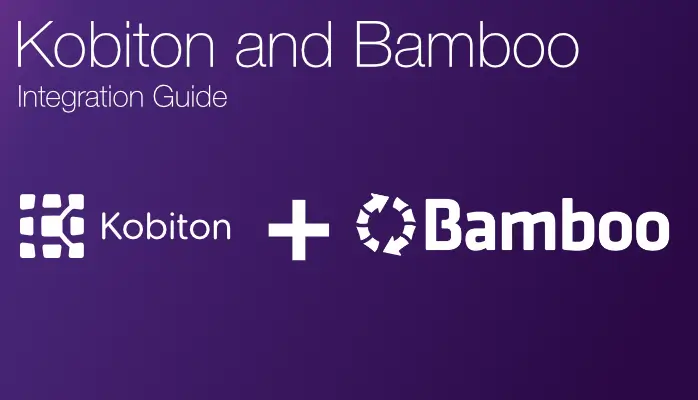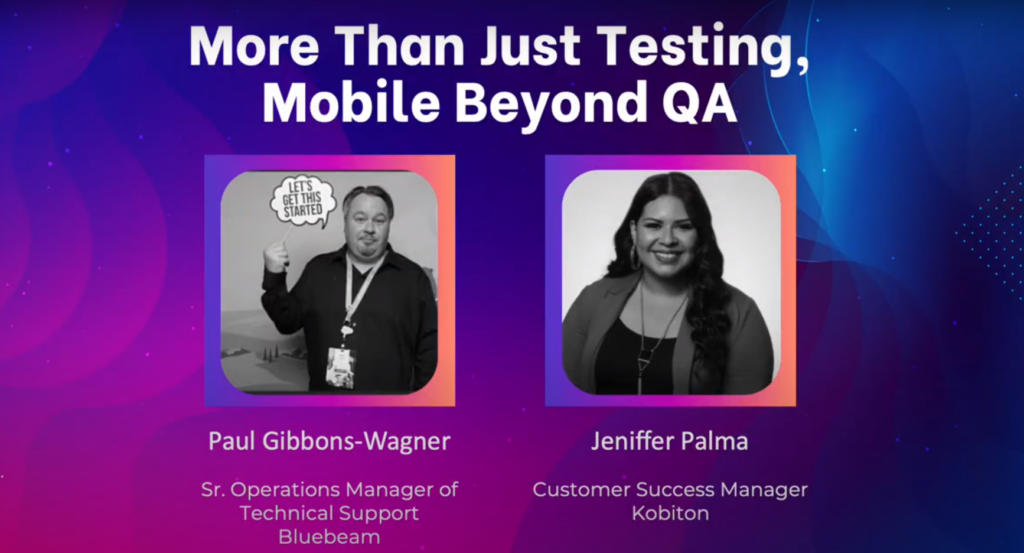
How to integrate real-device testing into a Bamboo pipeline

Frank Moyer
Have you considered lately what your customers might experience when faced with questions about your products? Support has always played a central role in customer relations, and that’s not changing anytime soon.
I recently spoke with Paul Gibbons-Wagner, senior operations manager for the technical support group at Bluebeam, at our Mobile Testing & Experience Summit. The world increasingly relies on support from companies like Bluebeam, which provides software for the architectural, engineering, and construction industries.
Gibbons-Wagner knows his stuff — in his 14 years at Bluebeam, he’s worked as technical support manager, lead support engineer, and technical support engineer.
“More or less, I oversee how we take care of our customers,” he said. “I make sure that we’re providing all the stakeholders in the company (with) the right data, to understand what the needs of our customers are.”
During our time together, Gibbons-Wagner and I were able to discuss some of the workplace challenges that accompany long-distance collaboration, especially as it pertains to software and application testing strategies. He also shared thoughts about his personal development in support, and we acknowledged the significance of a forward-thinking mentality.

—
First, however, we discussed how Bluebeam has grown to be a leader of the construction management industry.
“You’d be amazed at the number of people who need to be in the loop, in the conversation at any particular stage of a construction project,” Gibbons-Wagner explained. “It’s all about sharing plans, it’s all about notating plans. It’s all about requests for information about the plans and what’s needed. It’s all about helping everyone stay connected to meet deadlines and stay under budget.”
Bluebeam started out, Gibbons-Wagner says, as a drawing plan sharing platform, providing tools that better enable offices to share drawing plans. “We’ve kind of become the industry standard,” he said.
“We have customers around the world who are building everything. And we just help them do what they do.”
Gibbons-Wager told us how the industry is ever-changing, and generally slow to adopt digital solutions.
“We’ve kind of been the right solution at the right time,” he said, “to drive that evolution.”
—
Gibbons-Wagner has been at Bluebeam for almost fourteen years, and told us that he’s driven by a curiosity to “take the next step forward,” and to provide better support.
“I’ve been doing support for a long time,” he told us.
“I was having trouble landing a gig, and there was a company that I wanted to work for that was looking for help in their tech support department,” he said. “I thought it would be a good way to get my foot in the door … once things started to pick up again, I’d be in a good position to move into the engineering department and go from there.”
Instead, Gibbons-Wagner discovered that didn’t want to be an engineer. “It’s not where my personality fits,” he said. “I like working with people. I like helping them solve problems. I like helping them be successful in whatever they’re trying to do.”
At the time, Bluebeam was just starting to take off; the company he was at was “starting to decline,” Gibbons-Wagner says. He estimates there were about 23 employees when he came on board at Bluebeam.
“When it’s a small company like that, it’s still kind of in its startup phase,” he said. “Everyone wears a lot of hats. There’s not a lot of specialization, or significant divides between teams.”
That environment, it turns out, was perfect for him.
“I just kind of did everything I could,” Gibbons-Wagner told us. “As the company grew and expanded, we needed to have specializations and teams to scale effectively. I was always kind of a leadership voice in doing that, and that has kind of progressed my career with the company. As we continue to grow, I continued to make sure I was informed and educated on what we were doing, and what the best choices were,” he said. “That just kinda helped move my career along.”
—
Bluebeam’s flagship product had been desktop-based. But, as mobile devices became more and more popular, Gibbons-Wager said, requests began coming in for solutions that didn’t require “a desktop in the trailer,” as he puts it.
He conducted a lot of research to find a mobile testing platform that would allow his team to work with “a live solution.”
Kobiton had just released Lightning Mode for real device testing, which allows users to interface with a remote device at 30 frames per second.
“Kobiton offered dedicated devices for our organization, but managed by Kobiton in their data center. That was the perfect fit for us,” he said, “because I have teams around the world using the Kobiton platform – Europe, Australia, they’re not finding lag or issues with it. It’s ideal for us to have these managed devices in any regional office around the world can use, and it works smoothly, and it’s immediate.”
I was curious what he’d have to say about leveraging Kobiton for non-testing purposes — how it might have affected his company’s user experiences.
“It allowed all of my team to be able to use the devices,” he replied. “It allows all the team to get familiar with the app to answer those questions. I have a documentation team that doesn’t have to be issued devices, because they can just connect to Kobiton, get all the screenshots they need for documentation, and to create workflow guides.”
More specifically, Bluebeam purchased Kobiton as part of its customer support strategy. By giving their support team members access to real devices (remotely) to troubleshoot issues, Kobiton allowed those team members to guide customers through whatever issues they may have encountered. It also enabled them to create documentation for improved workflows.
As Gibbons-Wagner explained, “It’s about offering the app to all of my team members: Wherever they are, whatever specialized team they’re on, they have access to it.”
Kobiton’s Session Explorer, he explained, provides “a good offering of accessible log files, screenshots, screen recording, step recorder … so much that we can provide information to our engineers when we find an issue — we can create documentation by just grabbing screenshots.
“It’s great for the team member who grabs a screenshot to send to a customer. It’s convenient. It’s there. It works well,” he says.
“And it does that for everybody on the team.”
—
It’s clear that – just like the organization he works for – Gibbons-Wagner places a high premium on continual improvement and growth: an ability to look ahead, “at the future landscape of our industry. I’m helping the company get where we need to be, to provide support to those (future) customers,” he said.
“I’m all about … taking the next step forward,” Gibbons-Wagner told us. “As good as my team is, as good as our product is — there’s always the next step, the next peak to reach.”
Paul Gibbons-Wagner is a technology leader at Bluebeam, Inc., a leading software company committed to providing cutting-edge software solutions for AEC (Architecture, Engineering, and Construction) professionals on a global scale. With a proven track record in enhancing the efficiency and productivity of global support teams, Paul oversees pivotal areas including Data Analytics and Reporting, Systems and Processes, and Licensing Support. His strategic insights and hands-on approach have been instrumental in driving operational excellence and delivering top-tier support services to clients worldwide.
Check out our previous MTES recaps: